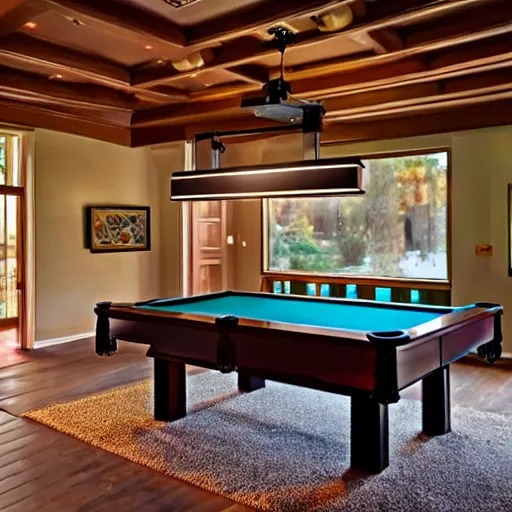Understanding Pool Table Sizes: Choosing the Right Table for Your Space and Gameplay
Pool table sizes play a significant role in determining the gameplay experience and ensuring a perfect fit for your available space.

In this comprehensive guide, we'll explore the various pool table sizes, including regulation sizes for different game types.
By understanding how table size can impact gameplay and considering your space limitations, you'll be able to choose the right pool table that fits both your needs and your space.
Section 1: Standard Pool Table Sizes
Standard pool tables come in various sizes, each with its own set of dimensions and gameplay characteristics.
We'll discuss the most common sizes:
1. Regulation Eight-Foot: The standard size for professional play, measuring 4.5 feet by 9 feet. This size is commonly used for tournament play and offers a spacious playing surface.
2. Bar-Size Seven-Foot: A popular choice for home game rooms and smaller spaces, measuring 3.5 feet by 7 feet. This size provides a slightly smaller playing area, making it easier to fit into tight spaces.
3. Oversized Eight-Foot: A slightly larger variation of the standard eight-foot table, measuring 4.8 feet by 9.6 feet. This size offers a bit more room for players and can enhance gameplay comfort.
Section 2: Considerations for Choosing the Right Size
When selecting a pool table size, several factors should be considered:
1. Available Space: Measure your game room or intended location to determine the maximum size that can comfortably fit. Ensure there is enough clearance around the table for players to move and cue properly.
2. Gameplay Preference: Consider the type of games you enjoy playing. Larger tables offer more space for precise shot-making, while smaller tables can create a more intimate and fast-paced gameplay experience.
3. Player Skill Level: Beginners may find it easier to start with a smaller table, as it requires less cue ball control and allows for shorter shot distances. Advanced players may prefer the challenge of a larger table.

Section 3: Non-Standard and Custom Sizes
In addition to standard sizes, pool tables are available in non-standard and custom sizes.
These options allow you to tailor the table to your specific needs and available space.
However, it's important to note that non-standard sizes may limit your options for cues, balls, and accessories.
Section 4: Impact of Table Size on Gameplay
The size of the pool table can significantly impact gameplay.
Larger tables offer more room for precise positioning and shot selection, while smaller tables require tighter cue ball control and can lead to faster-paced games.
Consider your playing style and preferences when choosing a table size.
Section 5: Summary and Decision-Making
To summarize, choosing the right pool table size involves considering your available space, gameplay preferences, and player skill level.
By understanding the options and impact of table size on gameplay, you can make an informed decision that maximizes both enjoyment and functionality.
Conclusion:
Pool table sizes come in various dimensions to accommodate different gameplay preferences and space limitations.
By considering factors such as available space, gameplay preferences, and player skill level, you can choose the right pool table size that fits your needs and enhances your gameplay experience.
So measure your space, consider your preferences, and get ready to enjoy countless hours of fun and excitement around your perfectly sized pool table.





